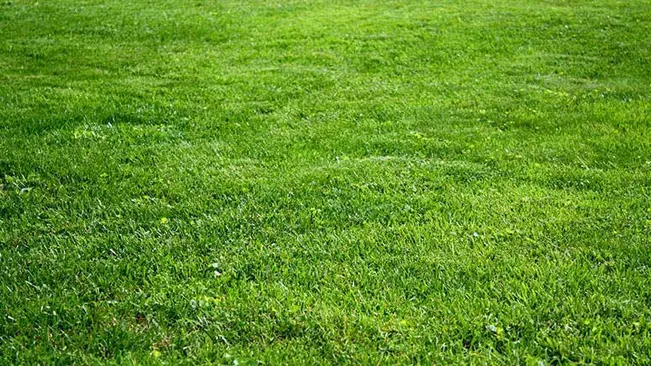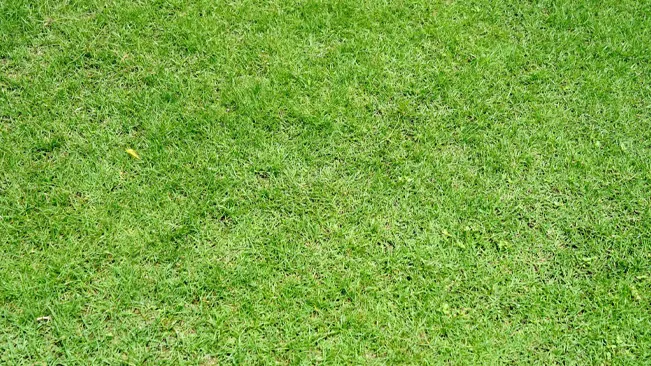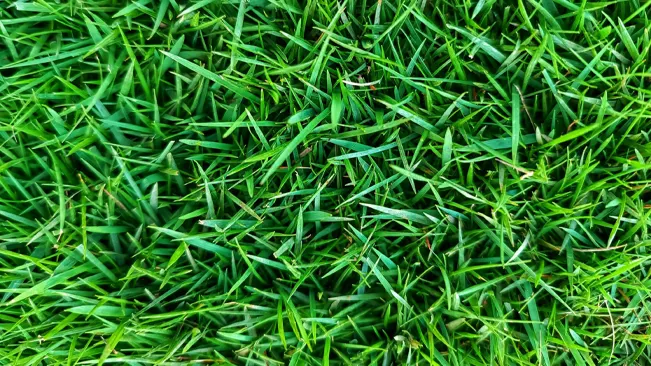How to Achieve a Thick, Lush Lawn: Essential Tips for Beginners
- March 5, 2024
- 2 comment
Everyone desires a lush, thick lawn that not only looks beautiful but also feels like a soft carpet underfoot. Achieving this dream lawn is not a mystery, but a science that involves understanding your lawn, implementing optimal care practices, and combating lawn enemies effectively. In this comprehensive guide, we will walk you through each step, ensuring you have all the knowledge and tools at your disposal to achieve the thick, vibrant lawn you’ve always wanted.
Understanding Your Lawn: Basics of Grass Types and Soil Health
Kentucky Bluegrass

Kentucky Bluegrass is renowned for creating a visually stunning lawn with its vibrant deep green color and fine, soft texture that feels luxurious underfoot. It thrives in cooler climates, making it a popular choice in northern regions. What sets Kentucky Bluegrass apart is its remarkable ability to recover from damage and stress due to its rhizomatous growth habit, where underground stems called rhizomes help it to spread and fill in bare spots, creating a dense, carpet-like appearance. This grass type prefers full sun but can tolerate light shade and requires moderate to high maintenance to maintain its best condition. Regular watering, fertilization, and mowing are key to keeping a Kentucky Bluegrass lawn looking its best.
Tall Fescue

Tall Fescue stands out for its adaptability and durability. Its deep root system, which can extend several feet into the soil, allows it to access moisture even during dry periods, contributing to its excellent drought tolerance. This feature, combined with its ability to thrive in a variety of conditions, including heat and partial shade, makes Tall Fescue a versatile choice for many homeowners. The grass has a coarser texture compared to Kentucky Bluegrass but compensates with a robust growth that can withstand high traffic, making it suitable for family yards, parks, and sports fields. Despite its toughness, Tall Fescue maintains a rich green color and dense growth, contributing to a lush lawn landscape.
Bermuda Grass

Bermuda Grass is a champion of warm-season grasses, ideal for southern regions where summers are long and hot. It’s highly appreciated for its aggressive growth habit, thanks to both rhizomes and stolons, which allow it to spread quickly and recover from wear and tear. This makes it an excellent choice for sports fields, golf courses, and active family lawns. Bermuda Grass requires full sun and does not perform well in shaded areas. While it is drought-resistant, it achieves its best growth with regular watering and fertilizing during the growing season. Bermuda Grass can go dormant and turn brown during winter in cooler areas but will bounce back with vigorous growth as temperatures rise.
Rye Grass

Rye Grass, particularly the perennial variety, is valued for its quick germination, rapid establishment, and fine, lush texture, making it a favorite for overseeding lawns in cooler climates or adding to grass mixtures for a quick green-up. While it prefers cooler temperatures, it can adapt to a range of conditions if properly cared for. Perennial Rye Grass provides year-round green in milder climates and can offer a temporary winter green in colder regions when overseeded into dormant warm-season lawns. Its fast growth and dense turf are excellent for high-traffic areas, though it may require more frequent mowing during peak growth periods. Annual Rye Grass, on the other hand, is often used for quick cover and erosion control, as it establishes rapidly but does not have the perennial nature or the cold tolerance of its perennial counterpart.
Zoysia Grass

Zoysia Grass is celebrated for its fine texture, slow growth, and carpet-like density, creating a luxurious and low-maintenance lawn ideal for warm climates. Its slow growth rate means less frequent mowing, and its dense turf effectively chokes out weeds, reducing the need for chemical treatments. Zoysia’s deep root system enhances its drought tolerance, allowing it to stay green and lush even in challenging conditions. It performs well in both sun and partial shade, making it versatile for different landscape designs. While Zoysia Grass takes longer to establish than some other grass types, its durability, low maintenance, and beautiful appearance make it a worthwhile investment for homeowners seeking a premium lawn experience.
Optimal Lawn Care Practices
Watering Wisely
- Deep and Infrequent Watering: Aim for deep watering sessions that moisten the soil to a depth of about 6 inches, encouraging deeper root growth. This is typically achieved by watering once or twice a week, depending on your soil type and climate, rather than shallow daily watering.
- Best Time to Water: Water your lawn early in the morning to minimize evaporation and allow the grass to dry before evening, reducing the risk of fungal diseases.
- Monitor Rainfall: Adjust your watering schedule based on natural rainfall, as overwatering can be as detrimental as under-watering.
- Use of Rain Sensors and Smart Irrigation: Invest in rain sensors or smart irrigation systems to optimize watering schedules according to weather conditions, ensuring your lawn receives just the right amount of water.
Fertilizing for Growth
- Soil Testing: Before fertilizing, conduct a soil test to determine your lawn’s specific nutrient needs. This ensures you select a fertilizer that complements your soil’s composition.
- Types of Fertilizers: Choose between synthetic and organic fertilizers based on your lawn care philosophy and the specific needs of your grass. Slow-release fertilizers are often recommended for their steady nutrient release.
- Application Timing: The best times to fertilize depend on your grass type. Cool-season grasses benefit from fertilization in early spring and fall, while warm-season grasses should be fertilized in late spring or early summer when they’re actively growing.
- Proper Application: Follow the manufacturer’s instructions for application rates and methods to avoid over-fertilization, which can harm your lawn and the environment.
The Art of Mowing
- Mowing Height: Keep your grass at an optimal height, which varies by grass type. Taller grass can shade the soil, reducing water evaporation and limiting weed growth. As a general rule, never remove more than one-third of the grass blade in a single mowing.
- Mower Blade Sharpness: Sharp blades make clean cuts, which heal faster and reduce the risk of disease. Dull blades tear the grass, leading to jagged edges that can brown and weaken the lawn.
- Mowing Patterns: Vary your mowing patterns to prevent soil compaction and grass from leaning in one direction. This practice encourages more upright growth and reduces wear patterns.
- Clippings: Leave clippings on the lawn when possible, as they decompose and return valuable nutrients to the soil, acting as a natural fertilizer.
Advanced Tips for Lawn Thickness
1. Soil Improvement and Conditioning
- Top-Dressing: Apply a thin layer of high-quality compost or topsoil over your lawn once a year. This can improve soil structure, promote healthy microbial activity, and provide essential nutrients.
- Organic Matter Incorporation: Regularly adding organic matter, such as compost, can enhance soil fertility and water retention, supporting denser grass growth.
2. Overseeding
- Species Diversity: Introduce a blend of grass types suited to your climate and lawn conditions. This biodiversity can make your lawn more resilient to pests, diseases, and environmental stresses.
- Timing: Overseed in early fall or spring when temperatures are conducive to seed germination and young grass has time to establish before extreme weather conditions.
3. Precision Watering Techniques
- Smart Irrigation Systems: Utilize smart irrigation technology to customize watering schedules based on weather conditions, soil moisture levels, and specific lawn needs, ensuring efficient water use.
- Soil Moisture Monitoring: Regularly check soil moisture to avoid over or under-watering, which can stress the grass and affect lawn thickness.
4. Custom Fertilization Plans
- Soil Testing: Conduct detailed soil tests to identify specific nutrient deficiencies and customize your fertilization plan to address these needs, promoting optimal grass growth.
- Micronutrient Amendments: In addition to N-P-K (Nitrogen, Phosphorus, Potassium), consider adding micronutrients like iron, magnesium, and calcium, which can enhance color and vigor.
5. Aeration and Decompaction
- Core Aeration: Perform core aeration at least once a year to relieve soil compaction, improve air and water infiltration, and encourage deeper root growth.
- Liquid Aeration: Explore liquid aeration products that can penetrate compacted soil layers and improve root zone conditions without the physical disruption of traditional aeration.
6. Pest and Disease Management
- Integrated Pest Management (IPM): Adopt IPM strategies that combine biological, cultural, mechanical, and chemical tools in a way that minimizes environmental and health risks.
- Regular Monitoring: Inspect your lawn frequently for early signs of pest or disease activity to enable prompt and targeted interventions.
7. Grass Cycling and Natural Fertilizers
- Leave Clippings: Allow grass clippings to decompose on the lawn, providing a natural source of nitrogen and reducing the need for synthetic fertilizers.
- Organic Fertilizers: Use organic fertilizers that release nutrients slowly, improving soil health and supporting sustainable growth over time.
8. Seasonal Adjustments
- Adapt Mowing Height: Adjust your mowing height seasonally, keeping grass taller in the hot summer months to reduce stress and encourage deeper rooting.
- Winter Preparation: Implement winterizing techniques, such as late-season fertilization, to prepare your lawn for the cold months and promote early spring recovery.
Conclusion
In conclusion, achieving a thick, lush lawn requires a combination of basic care practices and more advanced techniques tailored to the specific needs of your grass and soil. Starting with a foundation of proper mowing, watering, and fertilizing, you can significantly enhance your lawn’s health and appearance. However, to truly elevate your lawn to the next level, consider incorporating advanced strategies such as soil improvement, overseeding with diverse grass species, precision watering, customized fertilization plans, regular aeration, integrated pest management, and seasonal adjustments to your care routine. These practices not only contribute to the density and vibrancy of your lawn but also increase its resilience against environmental stresses, pests, and diseases. Remember, consistency in these efforts and a proactive approach to lawn care are essential for maintaining a beautiful, thriving outdoor space that can be enjoyed for years to come.
FAQs
- How often should I water my lawn to keep it thick and healthy?
Water your lawn deeply and infrequently, typically 1-1.5 inches of water per week, including rainfall. It’s best to water early in the morning to minimize evaporation and reduce the risk of disease. - What is the best time of year to overseed my lawn?
The best time to overseed depends on your grass type. For cool-season grasses, early fall is ideal, while late spring is best for warm-season grasses, ensuring the seeds have time to establish before extreme weather conditions. - How do I choose the right fertilizer for my lawn?
Start with a soil test to determine your lawn’s nutrient needs. Choose a fertilizer that matches these needs, paying attention to the N-P-K ratio (Nitrogen-Phosphorus-Potassium) and considering the inclusion of micronutrients. - How can I control weeds without damaging my lawn?
Use a combination of preventative measures like maintaining a healthy lawn and targeted treatments such as spot application of herbicides or manual removal. Always select herbicides that are safe for your specific grass type. - Why is aeration important for a thick lawn, and how often should I do it?
Aeration helps relieve soil compaction, improves water and nutrient infiltration, and encourages deeper root growth. Aerate your lawn at least once a year, preferably in the growing season for your grass type. - How can I prevent lawn diseases and pests?
Maintain healthy lawn practices such as proper watering, mowing, and fertilization. Regularly inspect your lawn for early signs of pests or disease and adopt integrated pest management strategies for treatment. - Is it better to leave grass clippings on the lawn or remove them?
Leaving grass clippings on the lawn, a practice known as grass cycling, can provide a natural source of nitrogen and reduce the need for synthetic fertilizers. However, remove clippings if they are too long or in excess, as they can smother the grass. - Can mulching help with lawn thickness?
While mulching is more commonly associated with garden beds, using an appropriate mulching mower can finely chop grass clippings and distribute them back onto the lawn, providing nutrients and helping to maintain moisture, which can contribute to a thicker lawn. - How do I know if my lawn is getting enough sunlight?
Most grass types need 4-6 hours of direct sunlight daily. If your lawn is thinning or has patchy growth in shaded areas, consider shade-tolerant grass varieties or alternative landscaping options for those areas. - How can I repair bare patches in my lawn?
Bare patches can be repaired by loosening the soil, applying a quality seed mix suited to your lawn, lightly covering with compost or soil, and ensuring consistent moisture until the new grass is established. For larger areas or severe damage, consider sod installation or professional lawn renovation services.

Joel Cunningham
Forestry AuthorI'm Joel Cunningham, an expert in pruning and weed management with over a decade of experience. My skills are rooted in formal training and extensive practice, focusing on advanced pruning techniques and efficient weed control. I'm known for my quality work, precision, and deep understanding of plant health and soil dynamics. My contributions extend to educational initiatives where I share sustainable practices and advice, establishing myself as a reliable and authoritative figure in the gardening community.
2 comments
How often do you need to fertilizer in east texas













Great info send me some suggestions on fertilizers ..thanks a million pete sanchez mercedes benz of sugarland
Juan Rafael Sanchez
March 12, 2024 3:34 pm